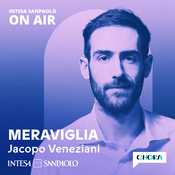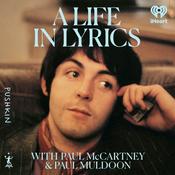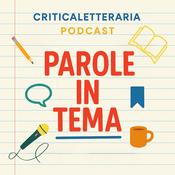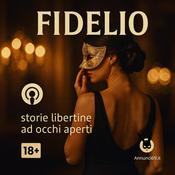277 episodi

Boars Gone Wild: Texans Hunt, Trap, and Cook a Piggy Pest
10/12/2025 | 25 min
In “Boars Gone Wild: Texans Hunt, Trap, and Cook a Piggy Pest,” Gravy producer Georgia Sparling takes a deep dive into the conundrum around Texas’ pig problem. They say everything’s bigger in Texas, and that is certainly true of the wild hog population. Millions of feral pigs roam the rural (and not so rural) areas of the Lone Star State — destroying farmland, pushing out native animals, obstructing roadways, and leaving behind billions of dollars in damage each year. And their numbers are growing at an astounding rate. Hunters and landowners in Texas have a green light to kill any and all wild pigs, be it on foot, from a helicopter, or even from a hot air balloon. But then these intelligent yet invasive animals are often left to rot in the fields because everyone knows they’re tough and gamey, right? Well, not according to chef, butcher, hunter, and “hog apologist” Jesse Griffiths. The author of the James Beard Award-winning The Hog Book and co-owner of Austin’s Dai Due restaurant, Griffiths is on a mission to revamp the reputation of feral pigs. In this episode of Gravy, Sparling explores the wild hog origin story and how the population has grown, not only in Texas but across more than thirty states. Armed with a mic, she travels from field to table. She joins Griffiths on a hunt for hogs, and then takes listeners into the kitchen to understand just how varied, versatile, and sustainable their meat is. She will also explore their slowly growing popularity as wild boar meat becomes more available. Along the way, she speaks with Mitch Hagney of the San Antonio Food Bank. As federal funding cuts erode SNAP benefits and food pantry budgets, Hagney and his colleagues are devising creative solutions to address the hunger problem. They’re hoping that by teaming up with hunters and trappers, wild pigs can be a creative solution to feeding thousands of low-income families in Texas and beyond. Learn more about your ad choices. Visit megaphone.fm/adchoices

Texas Pecans, A Thirsty Nut to Crack
26/11/2025 | 28 min
In “Texas Pecans, A Thirsty Nut to Crack,” Gravy producer Avery Thompson explores how a changing climate is impacting pecans in Texas, and introduces listeners to the innovative Texans using both age-old techniques and twenty-first-century adaptations to ensure Texas pecans make it to the grocery shelves—and into a Thanksgiving pie near you. For about as long as there have been humans in what we now know as Texas, they have likely found sustenance in the land’s native pecans. For many years, Texas supplied the world with the bulk of its pecans—but in recent years, the state has seen unprecedented heat waves and droughts, which have stressed not only its residents, but one of its most vital and revered crops. Exacerbating the climate problem is an explosion in population across the state, particularly in central Texas, where urban sprawl from the growing cities of Austin and San Antonio not only puts pressure on the water table, but also offers a tempting cash-out for struggling pecan farmers. Between drought-affected trees and the sale of farms, Texas is seeing a statewide decline in annual pecan yields. And climate scientists predict that these rough recent years are likely not an exception, but a new normal. Still, Texans are finding creative ways to adapt and preserve their trees and a way of life. For this episode, Thompson talks to pecan growers, including Troy Swift of Swift River Pecans, who has turned to regenerative agriculture and biodiversity. She also speaks to Mark Walls of 38 Pecans, who has invented creative new pecan products to boost his business. Jennifer Wammack of Berdolls, a commercial bakery, tells how her family ships pies all over the world and distributes them through vending machines. And Thompson also visits the Lamar Senior Center in Austin, one of the last remaining nut-cracking facilities open to the public, where people come after gathering pecans on their own property each autumn. Hopefully, for many holidays to come, we can all enjoy a big slice of Texas’s state dessert. Learn more about your ad choices. Visit megaphone.fm/adchoices

Tending Episode 6: What Next?
19/11/2025 | 22 min
In the sixth and final episode of her six-part Tending series, host Shirlette Ammons seeks insight on the future of Black farming and asks if there is a world in which farmers are not dependent on the USDA. About Tending Hosted by award-winning musician and documentary producer Shirlette Ammons, Tending is a six-part narrative series that explores the ongoing struggles of Black farmers through the lens of Pigford v. Glickman—once the largest civil rights class-action lawsuit in U.S. history. Ammons—an eastern North Carolina native with deep farming roots—travels across seven Southern states to meet Pigford claimants and their descendants. Their stories paint a vivid picture of injustice and an ongoing fight for restitution. Learn more about your ad choices. Visit megaphone.fm/adchoices

Tending Episode 5: What Now?
12/11/2025 | 23 min
In this fifth installment of Gravy's Tending series, producer Shirlette Ammons examines the Discrimination Financial Assistance Program, comparing it to the Pigford settlement and assessing whether this new federal program represents a genuine step toward justice for Black farmers. Learn more about your ad choices. Visit megaphone.fm/adchoices

Tending Episode 4: Texas
05/11/2025 | 25 min
The fourth installment of the six-part Tending series explores the power of the USDA's county committees, recounting a Black family’s tragic story of land loss and harassment and examining why these local committees are often called "the last plantation." Learn more about your ad choices. Visit megaphone.fm/adchoices
Altri podcast di Arte
Podcast di tendenza in Arte
Su Gravy
Ascolta Gravy, Meraviglia - Intesa Sanpaolo On Air e molti altri podcast da tutto il mondo con l’applicazione di radio.it
Scarica l'app gratuita radio.it
- Salva le radio e i podcast favoriti
- Streaming via Wi-Fi o Bluetooth
- Supporta Carplay & Android Auto
- Molte altre funzioni dell'app
Scarica l'app gratuita radio.it
- Salva le radio e i podcast favoriti
- Streaming via Wi-Fi o Bluetooth
- Supporta Carplay & Android Auto
- Molte altre funzioni dell'app

Gravy
scarica l'app,
ascolta.




































